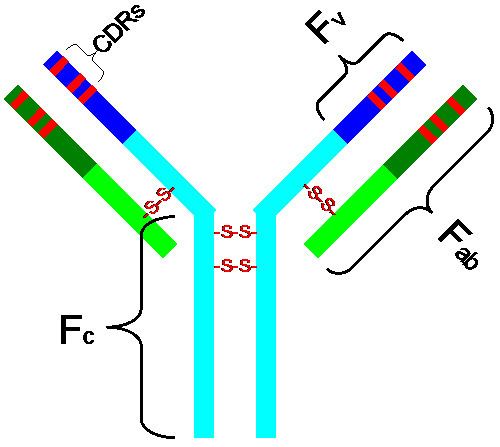 | ||
In molecular biology, a framework region is a subdivision of the variable region (Fab) of the antibody. Located on the tips of the Y-shaped molecule, the framework regions are responsible for acting as a scaffold for the hypervariable region (CDR) of the Fab, supporting the binding of the CDR to the antigen, and maintaining the overall structure of the four variable domains on the antibody.
Residues of the framework region responsible for supporting the binding of the antigen to the antibody can be divided into two categories; residues that are in contact with the antigen and are not in contact with the antigen. Framework residues that come in contact with the antigen are a part of the antibody's binding site, and are located either close in sequence to the CDRs or in close proximity to the CDR when in the folded three dimensional structure. Framework residues that do not come in contact with the antigen affect the binding indirectly by aiding in structural support for the CDR. This enables the CDR to take on the correct orientation and position so it is exposed on the surface of the chain ready to bind to an antigen.
The framework region is made up of four amino acid segments between the three CDRs of the Fab. The framework region makes up about 85% of the variable region. To increase its stability, the framework region has less variability in its amino acid sequences compared to the CDR. There are four framework regions found on each antibody located on the two variable heavy domains and the two variable light domains
.
